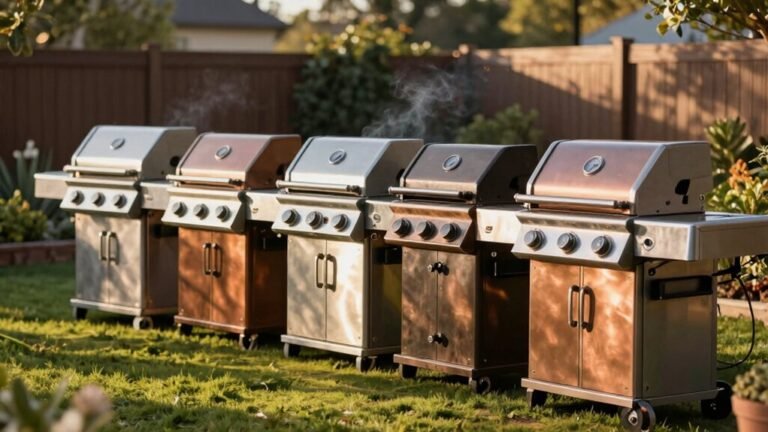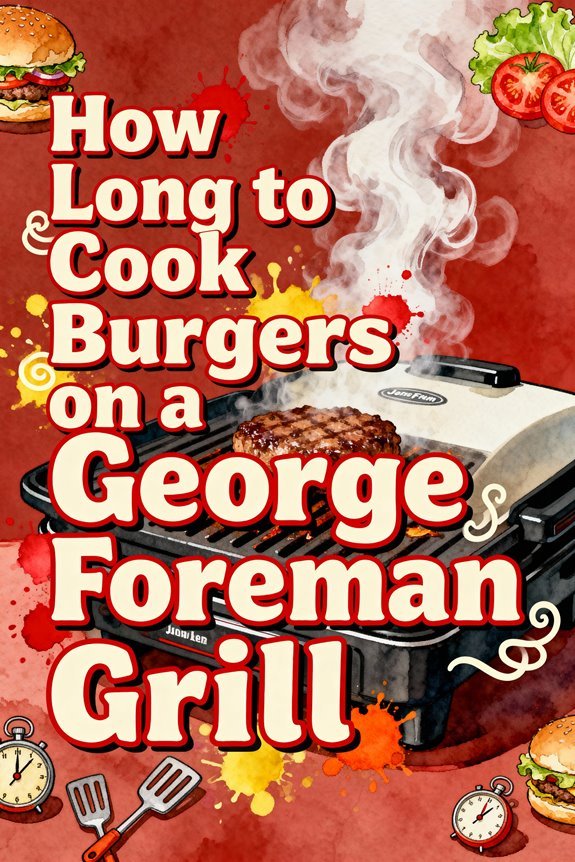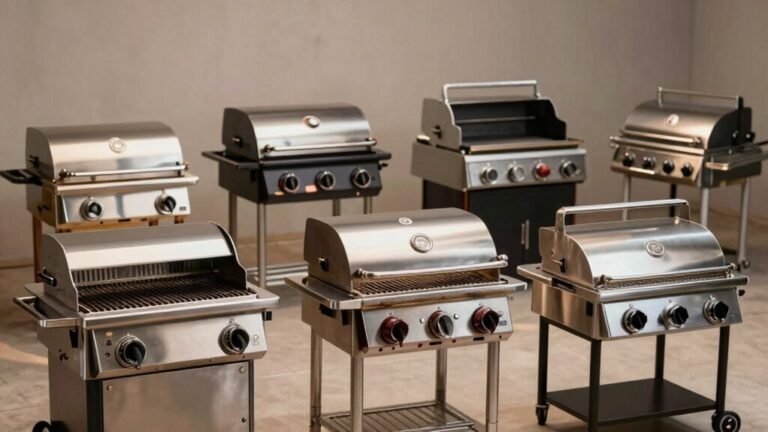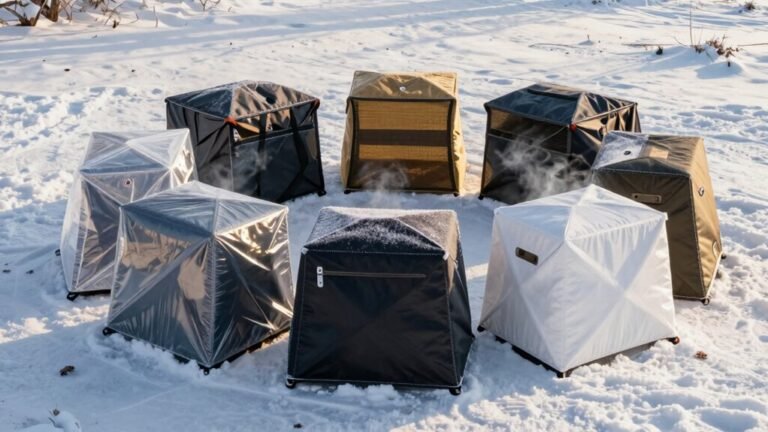To grill perfect mutton chops, start by selecting cuts with good marbling and marinate them for at least 2 hours in a blend of yogurt, olive oil, and aromatics. Preheat your grill to 500°F and set up two cooking zones: one hot (350-450°F) and one cooler (225°F). Sear the chops for 2-4 minutes per side, then move them to indirect heat until they reach 130-135°F internal temperature. Let them rest 5-10 minutes before serving. Master these fundamentals, and you’ll reveal the secrets of restaurant-quality mutton chops.
Selecting the Perfect Cut of Mutton
When selecting mutton chops for grilling, you’ll encounter five distinct cuts that each offer unique qualities. For best grilling results, consider curry chops from the shoulder or leg, which deliver rich flavor and excellent charring potential. Fry chops, sourced from the rib or shoulder sections, provide superior tenderness and take well to marinades. If you’re planning kebabs, opt for boneless cuts that guarantee even cooking and easy preparation. Local farmers supply many of these premium cuts through trusted butcher shops. Like lean chicken breast, mutton chops can be part of a protein-rich, nutrient-dense diet when properly prepared.
Look for cuts with proper marbling, as the fat-to-meat ratio greatly impacts your final result. You’ll want to examine the thickness and fat distribution, particularly in shoulder and leg chops, which may require additional marination for tenderness. Similar to indirect heat grilling, low and slow cooking helps preserve the meat’s natural juices. Select cuts with visible marbling throughout the meat, as this natural fat content will enhance both flavor and moisture retention during grilling.










